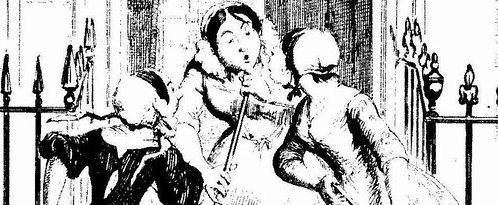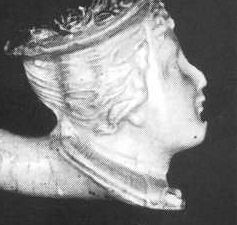By and about Australian women
I should add that while I don't read much fiction, a browse along my bookshelf revealed a selection of non-fiction on women in Australia.
This includes:
* Damned Whores and God's Police: The Colonization of Women in Australia, Anne Summers, first published 1975.
(THE original classic.) The title is explained by two quotes:
"No, no - surely not! My God - not more of those damned whores! Never have I known worse women."
Lt Ralph Clark on the arrival of the Second Fleet with 200 women convicts in June 1790
"If Her Majesty's Government be really desirous of seeing a well-conducted community spring up in these Colonies, the social wants of the people must be considered. ... For all the clergy you can despatch, all the schoolmasters you can appoint, all the churches you can build, and all the books you can export, will never do much good, without what a gentleman in the Colony appropriately called 'God's police' - wives and little children - good and virtuous women."
Caroline Chisholm,Emigration and Transportation Relatively Considered, 1847
* Closely followed by The Real Matilda: Women and Identity in Australia 1788 to 1975, Miriam Dixon, 1976. She writes about what writing history was like then:
"I call this an exploratory book, not as a device to disarm critics, but as an honest statement of intent and limitations. Virtually all serious analysis of Australian character - or identity - is by males about males. So what else could I be doing but throwing up a temporary scaffolding?" (p. 13)
* The Other Half: Women in Australian Society, Jan Mercer, ed, 1975. This is sociological, concerned mostly about the present and recent past, with a heavy base in statistics.
Interesting that there was such an explosion of material in a short period. I bought all of these paperbacks in 1985, in my second year of university, when I moved out of home, found the wonderful secondhand bookshops on Glebe Point Road in Sydney, and really started my education. (Disgraceful that my posh girls' school hadn't even hinted that such works existed.)
Then again, I thought at the time these were very old books, but of course it was only a decade since their publication. They confirmed for me many of the things I'd observed and thought, but had not had any impact on most areas of Australian life, including (perhaps unsurprisingly) the agriculture faculty (particularly the reproduction lecturer who interspersed slides of naked women with cow uteri to "enliven" lectures).
Purchases in the past ten years, when not living in Oz, has been much more piecemeal, but two books probably present an outline of two key areas of debate.
* The First Stone: Some Questions about Sex and Power, by Helen Garner, 1995. She identifies herself as a feminist, but she struggles to come to terms with a celebrated case of alleged sexual harassment/assault in a college of Melbourne University in 1992 that was a cause celebre at the time.
* Bad Girls: the Media, Sex and Feminism in the 90s, Catharine Lumby, 1977 written in explicit response to a question asked by Anne Summers as to why younger women are so alienated by feminists of her era. "She recalls how horrified she was to discover many younger women haven't made the connection 'between the great array of choices now available and the battles we fought'. (p. 154) The answer the books gives is that feminism has become an institution, with all of the inevitable power frameworks that involves, and the excluded are bound to protest. To call it a defender of "lipstick feminism" would be simplistic, although there's an element of that; it might be fairer to say it defends feminist diversity.
(I've haven't included Germaine Greer's books because she writes about women around the world, rather than specifically in Australia.)







0 Comments:
Post a Comment
<< Home